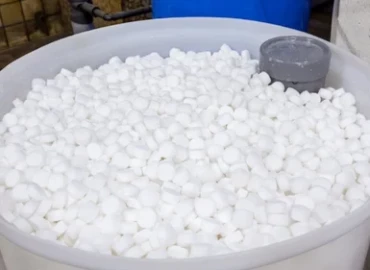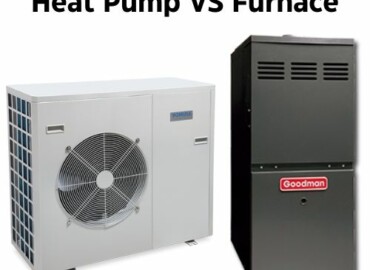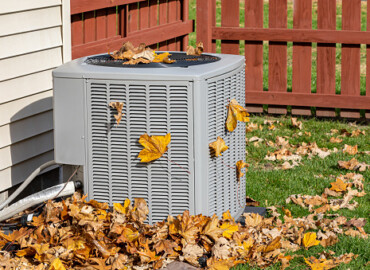Does an Oil Furnace Produce Carbon Monoxide?
Are you planning to relocate to a home with an oil heating system? Do you want to install one at home? Are you familiar with how the heating system works and its maintenance? Does an oil furnace produce carbon monoxide? Well, worry not because here is what you need to know about them.
For starters, the question of whether oil furnaces produce carbon monoxide or not is pretty straightforward. All furnaces or heating systems that burn fossil fuel generate carbon monoxide (CO), a silent but deadly gas — which is okay. Diligence is required when handling furnaces and maintenance to keep everyone in your family safe from the dangers of CO poisoning. Essentially, carbon monoxide production happens due to the malfunction of a furnace burner in a too-rich fuel mixture condition.
What is an Oil Furnace?
Consequently, all heating systems used in the combustion of fossil fuels are installed with an oil furnace. It is a component in the heating system responsible for the combustion of fossil fuel and the transfer of all heat in the system. Most furnaces are either fuelled by oil or natural gases. However, this article concentrates on oil furnaces and their production of carbon monoxide.
Oil furnaces convert the oil into heat or gas from natural gases. Oil furnaces primarily consist of heat exchangers and burners, blowers, and controllers to regulate temperature accordingly. They are built to provide performance for a more extended period.
How does Oil Furnace work?
An oil furnace works cyclically. When the temperature drops, a thermostat senses the change and develops the need to generate heat. As a result, the burner motor becomes activated, pulling heating oil from the storage tank located either outside or inside one’s house. It may also be above the ground or beneath the ground, in a basement.
The oil drawn by the burner is then mixed with an appropriate amount of oxygen (air) from the atmosphere by an ignition transformer that simultaneously generates heat. In the process, the oil breaks up and vaporizes as it escapes into the atmosphere through the nozzle. This allows the ignition to produce sparks, which generate heat.
The oil furnace then delays for a while to allow time for the heat exchanger to warm up, after which the blower draws in air, which is then heated as it passes over the heat exchanger. The process of heating the room continues until the desired temperature is achieved. On reaching this point, the burner de-energizes, and the flow of heating oil stops. No more heat is produced.
Does an Oil Furnace Produce carbon monoxide?
As a by-product, carbon monoxide is expected from the combustion of fossil fuels such as oil. It is, therefore, one of the derivatives of an oil surface. Carbon monoxide leaks, although (fortunately) rare, occur when there are faults in the burner. However, any leak should be taken seriously as carbon monoxide accumulation depletes oxygen available for breathing, causing suffocation. Every time the furnace heats, carbon monoxide is produced but is released into the atmosphere through the vent. The extent of faults in the burner determines the quantity of CO leaking into one’s house, although any amount is too much.
Main Differences Between Oil And Gas Based Furnaces
As stated earlier, furnaces may either be oil-based or gas-based. Although they serve the same purpose, a line can be drawn between them, as evident from their names. The significant difference between the two is that an oil-based furnace uses oil to generate heat, while a gas-based furnace uses gas to generate heat. As a result, if one was used to the gas furnace system, the most significant adjustment would be installing an oil storage tank for the oil furnace.
One can expect to burn about three gallons of oil per day, transforming to about 100 gallons per month, especially during cold seasons. Typically, the amount of oil used in this period is almost equal to the amount required for the rest of the year. Recognizing the amount of fuel to be used is essential as it helps one determine the tank’s capacity and when to refill it. An oil furnace’s efficiency ranges between 80 and 90 percent while that of a gas furnace range between 89 to 98 percent. However, differences between oil furnaces’ prices, new gas, and fuel cost can also be established.
Technological advancements have now developed an auto-refill service for the oil furnace storage tanks to ensure that it does not run out of oil, especially during cold seasons. The auto-refill system’s beauty involves computer software that detects an oil shortage in the tank with a high level of accuracy. The advancement not only does it save one’s time but also relieves one of the duty to monitor tank gauges to determine the quantity of fuel left in the tank.
Pros of Oil Furnaces
Using an oil furnace as a heating system is bountifully advantageous. They provide more heat as compared to any other heating source. They are also less expensive as compared to gas furnaces. It’s quite easy to maintain oil-burning furnaces.
Cons of Oil Furnaces
On the other hand, oil furnaces require an on-site oil storage tank whose maintenance is expensive due to the accumulation of soot and dirt, which also calls for regular cleaning of the chimney and frequent changing of oil filters. Its efficiency is even lower than that of the gas furnace, and fuel costs may also be high.
Conclusion
Carbon monoxide poisoning is severe, and any leaks deserve unequivocal attention. As it is silent, its effects are either on a long-term basis or a short-term basis. Short-term effects include confusion, vomiting, dizziness, nausea, headache, and sick pets. Long-term effects include heart complications, memory loss, brain damage, and even death. The idea of ignoring any carbon monoxide leaks is not safe, as seen from its effects. For maximum safety, it is vital to put up carbon monoxide detectors in our homes.



